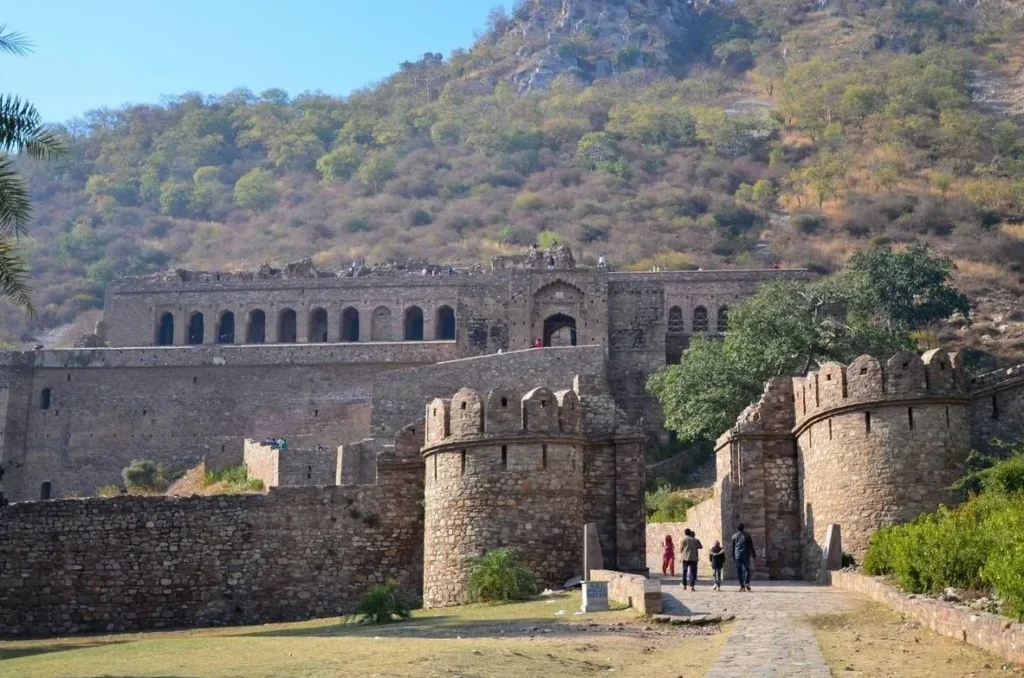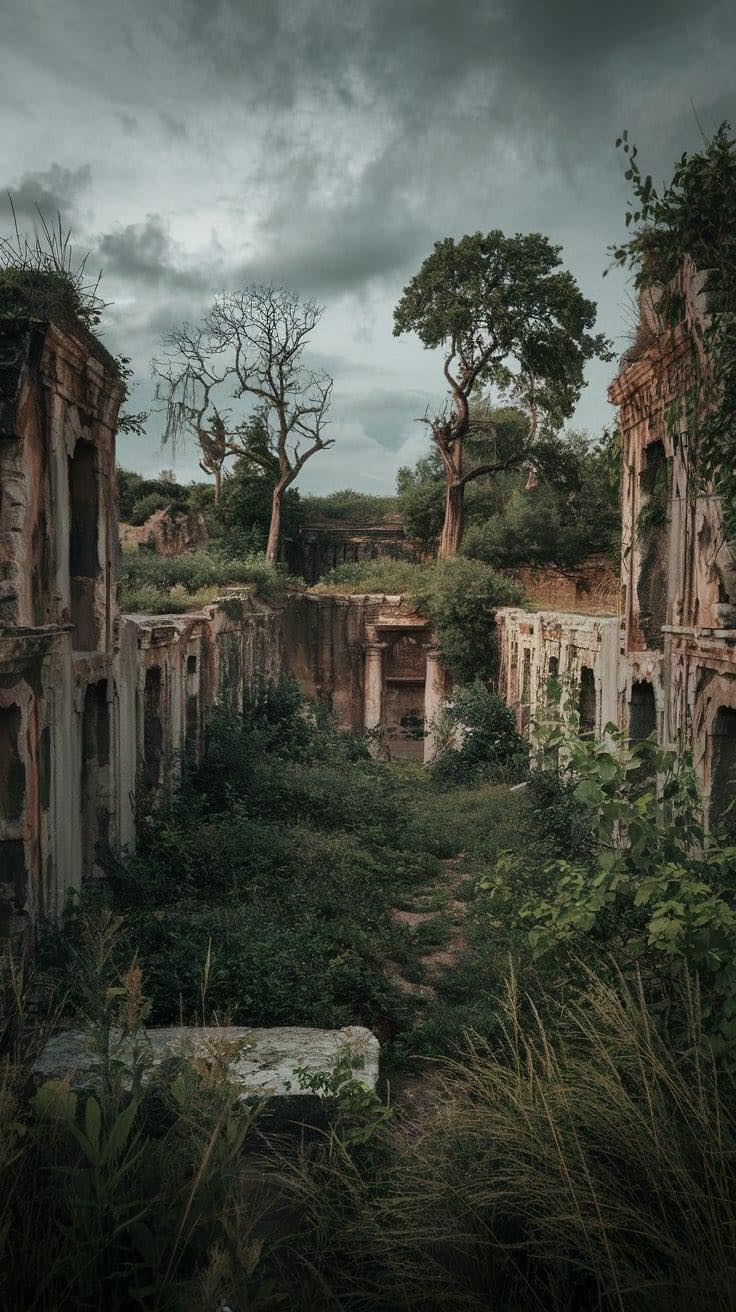The Haunting of Bhangarh Fort, Rajasthan: India’s Most Haunted Fortress Unveiled
Nestled in the Aravalli Hills of Rajasthan’s Alwar district, Bhangarh Fort is a 17th-century marvel that blends breathtaking architecture with bone-chilling mystery. Dubbed India’s Most Haunted Place, this ruined fortress near the Sariska Tiger Reserve is infamous for its ghostly legends, eerie ambiance, and a strict Archaeological Survey of India (ASI) ban on entry after sunset. From the curse of a vengeful tantric to the doomed beauty of Princess Ratnavati, the haunting of Bhangarh Fort captivates thrill-seekers, historians, and ghost hunters alike. In this blog, we dive into the chilling tales, historical roots, and paranormal encounters that make Bhangarh a must-visit for those brave enough to explore Rajasthan’s spookiest destination.

Bhangarh Fort: A Glorious Past Shrouded in Mystery
Built in 1573 by Raja Bhagwant Das, a Kachwaha ruler of Amber, Bhangarh Fort was a thriving township for his son, Madho Singh, brother of Mughal general Man Singh I. Located 50 km from Sariska Wildlife Sanctuary, the fort boasted over 9,000 houses, a grand royal palace, bustling Jauhari Bazaar, and temples like Gopinath, Someshwar, and Hanuman, all crafted in Nagara-style architecture with Jhiri marble and exquisite carvings. Protected by five gates—Lahori, Ajmeri, Phulbari, Delhi, and the main gate—and three fortifications, Bhangarh was a hub of trade and culture until its decline by 1720, triggered by famine, wars, and, according to legend, supernatural curses.
Today, the fort’s ruins—crumbling havelis, roofless bazaars, and the four-story palace—stand amidst lush Aravalli greenery, with banyan trees and a serene pond adding to its haunting allure. The ASI’s signboard prohibiting entry from sunset to sunrise fuels its reputation as a “bhoot bangla” (haunted house), with tales of missing tourists and ghostly apparitions.
The Legends Behind Bhangarh’s Haunting
Two chilling legends explain Bhangarh Fort’s cursed fate, both rooted in folklore and widely recounted by locals and guides.
The Curse of Guru Balu Nath
Guru Balu Nath, a revered ascetic, meditated in a cave near Bhangarh’s site before the fort’s construction. When Raja Bhagwant Das sought permission to build, Balu Nath agreed on one condition: the fort’s shadow must never fall on his dwelling. Madho Singh honored this, but a later descendant, possibly Ajab Singh, expanded the palace vertically, casting a shadow over the sage’s cave. Enraged, Balu Nath cursed Bhangarh, dooming the town to ruin. Locals claim this curse prevents roofs from standing in the area—any attempt to build one collapses mysteriously, a phenomenon still reported today.
Princess Ratnavati and the Tantric’s Curse
The more popular legend centers on Princess Ratnavati, daughter of Chatr Singh, renowned for her unparalleled beauty. At 18, her charm attracted suitors from across Rajasthan, but also the obsession of Singhia, a local tantric skilled in black magic. Knowing he could never win her, Singhia enchanted a perfume bottle intended for Ratnavati, hoping to bewitch her. The princess, sensing his trickery, threw the potion onto a boulder, which rolled and crushed Singhia. With his dying breath, he cursed Ratnavati, her family, and Bhangarh, vowing its destruction. The following year, a battle with Ajabgarh (some say Mughal forces) killed Ratnavati and most of Bhangarh’s inhabitants, leaving the fort desolate. Locals believe the spirits of Ratnavati, Singhia, and the slain haunt the ruins, trapped by the curse.

Paranormal Encounters at Bhangarh Fort
Bhangarh’s haunted reputation is fueled by eerie visitor accounts and strict ASI warnings. Reported paranormal experiences include:
- Ghostly Apparitions: Visitors claim to see a woman in a black saree, possibly Ratnavati, roaming the fort, or shadow figures and soldiers’ spirits.
- Unexplained Sounds: Screams, whispers, bangle clinking, and ghostly music emanate from the ruins, especially at night.
- Sense of Dread: Many report anxiety, paranoia, or the feeling of being watched, with sudden temperature drops despite Rajasthan’s heat.
- Tragic Incidents: A 2016 tale describes three tourists who stayed past sunset; one fell into a well, and all died in a car accident en route to a hospital.
- Mysterious Disappearances: Locals and posts on X claim tourists who ventured in at night vanished, reinforcing the ASI’s ban.
Paranormal investigators and YouTubers, like @confusedvichar, have explored Bhangarh, noting its eerie vibe but finding no definitive proof. The fort’s temples, particularly Shiva Mandir, are considered safe havens from spirits, with locals attributing their presence to balancing supernatural forces.
Historical and Skeptical Perspectives
Bhangarh’s decline aligns with historical events: political instability, a devastating famine in the 18th century, and wars, possibly with Ajabgarh or Mughal forces, led to its abandonment. The fort’s strategic location near Sariska made it a trade hub, but natural calamities and migration emptied the town.
Skeptics attribute Bhangarh’s haunting to:
- Environmental Factors: The fort’s isolation, surrounded by dense forests and hills, amplifies sounds like wind or wildlife, mistaken for ghosts.
- Psychological Effects: The fort’s ruined state and ghost stories create a placebo effect, heightening visitors’ anxiety or imagination.
- Cultural Beliefs: Hindu traditions link unfulfilled desires or improper deaths to restless spirits, fueling tales of Ratnavati and Singhia.
- Tourism Hype: The ASI’s signboard and media, like the 2014 film Trip to Bhangarh, amplify the fort’s mystique to draw tourists.
Despite skepticism, locals and some visitors, like Pushpendra, insist on supernatural activity, citing personal experiences of friends collapsing or acting strangely near the fort’s palace. Posts on X, such as @my_rajasthan’s claim of Bhangarh as “one of Asia’s most haunted places,” reinforce its global infamy.
Bhangarh Fort Today: A Haunted Tourism Hotspot
Bhangarh Fort attracts thousands annually, from history buffs to ghost hunters, drawn by its ruins and spooky lore. Open from 6 AM to 6 PM, entry is free, though video filming costs ₹25. The fort’s temples, havelis, and three-story gateway remain architectural highlights, while nearby attractions like Sariska National Park (28 km) and Bala Quila Fort in Alwar (90 km) complement a visit. Accessible 83 km from Jaipur (2 hours by car) or 235 km from Delhi (5 hours), Bhangarh is ideal for a day trip. No hotels exist in Bhangarh due to its cursed reputation, but resorts in Alwar or Dausa, like Sariska Palace, offer lodging.
Why Visit Bhangarh Fort? Tips for Travelers
Bhangarh blends history, architecture, and supernatural intrigue, making it a top Rajasthan destination:
- Best Time: Visit from October to February for cool weather, enhancing the eerie vibe. Avoid monsoons (July–September) due to heavy rains.
- Getting There: From Jaipur, take NH11 to Dausa, then NH11A and SH55 (2 hours). From Delhi, use NH8 and SH55 via Dausa (5 hours). The nearest railway station is Dausa (28 km), with buses to Gola Ka Bas (2 km from the fort).
- What to See: Explore the Gopinath Temple, Jauhari Bazaar, Nartakiyon Ki Haveli, and royal palace. Visit nearby Sariska or Ajabgarh Fort.
- Ghost Hunting: Bring a camera and flashlight, but adhere to the ASI’s sunset rule to avoid fines or risks.
- Safety: Travel in groups, as the fort is isolated. Pack food, as no eateries exist nearby.
- Cultural Respect: Honor local beliefs about the curse and avoid disrespecting temple spaces.
Conclusion: Dare to Explore Bhangarh’s Ghosts?
The haunting of Bhangarh Fort weaves a tapestry of love, betrayal, and curses, transforming a once-thriving kingdom into India’s spookiest ruin. Whether it’s Guru Balu Nath’s shadow curse or Singhia’s vengeful spell, the fort’s eerie silence and ghostly tales captivate all who visit. As you wander its crumbling bazaars or pray at its temples, will you feel Ratnavati’s presence or hear the tantric’s whispers? Visit Bhangarh Fort to uncover its secrets—but leave before sunset, lest the curse claims you too.
Have you explored Bhangarh or experienced its paranormal vibe? Share your stories in the comments, and subscribe for more chilling tales from India’s haunted heritage!
Disclaimer: The haunting of Bhangarh Fort is based on folklore and anecdotal reports, with no scientific evidence of paranormal activity. Approach with curiosity and respect for Rajasthan’s cultural legacy.So, if you ever find yourself in Rajasthan, standing before the gates of Bhangarh, ask yourself: Will you heed the warnings, or will you tempt the curse that still lingers in the shadows?
